Here’s the scenario — you’ve got some hip pain while playing tennis (or another sport) and suspect that mobility drills are the answer.
For the record, you could insert back pain, shoulder pain, or any other type of ache or pain — the idea I’m about to present still applies.
But mobility is a vague term. Can a stretch be considered mobility? What about a dynamic warm-up movement like hip circles?
I won’t get into the various subtleties of mobility here, but I will say this — any stretch, whether performed dynamically or statically, can be useful… but it won’t be the ultimate solution.
Movement Is Good — Really Good
If you’re feeling some hip pain (that’s the example we’ll use here), then you probably want to move the hip.
That’s where low-level drills like hip circles and hip switches can be useful.
But excessive range of motion probably isn’t advisable — at least not early on. Getting into end ranges could aggravate the area more than help it.
The beauty of these small movement snacks (a term I borrowed from Zak Gabor, Clinical Athlete co-founder) is that you can do them as often as you’d like. The stimulus is quite low, so there’s no danger of getting sore from them (and if you are, you’re pushing too hard).
I promise you though, if you perform a laundry list of movement snacks every day, start feeling better, and then jump back into tennis (with any meaningful intensity), your hip pain and discomfort will resurface.
But Why Does It Feel Better?
The reason it feels better after doing those movement snacks is twofold.
First, you’re slowly poking into the area — building tolerance, getting blood and other fluids moving through it, and creating a better environment for healing.
Second, and more importantly, you’ve stopped doing the activity that caused the flare-up in the first place. You might even stop all activity temporarily.
And guess what — mother nature takes the lead. Instead of continuing to poke the hip and ask too much of it, you’re giving it the time and space to settle down.
This is such an underappreciated concept — especially in today’s world of go-go-go, add-add-add.
But it’s extremely powerful. And there’s evidence to support this. Researchers see it often: they’ll give one group of tendinopathy sufferers an exercise protocol, while a control group does nothing (other than avoiding aggravating movements).
Lo and behold, both groups experience similar outcomes — reduced pain and improved function.
Nature doing its thing.
So What’s the (Unsexy) Answer?
Let’s say you’ve taken some time off, added a bit of movement, and you’re feeling better. Now what?
First, some discomfort during training is probably okay. How much depends on several factors, but in general, anything light — say less than 3/10 — is likely fine.
Because in the end, that achy hip needs to experience stress. And during tennis (or any athletic activity), your hip — and other joints — will be put to the test under chaotic, unpredictable conditions.
You’ll be solving problems: chasing down wide balls, sliding into low volleys, changing direction rapidly — and you won’t be thinking about your hip while doing it. But your hip will still be experiencing stress in the process.
The answer, then, is this: you need to progressively place that hip under more and more strain. That means loaded, ballistic, and dynamic movements that put tension, force, and impact through the hip. These need to be at the forefront of your training.
Those movements will start at an easier level. This might mean covering less distance, at lower intensities (speed or load), and with less complexity (more predictable).
But they must progress in those variables — otherwise, you’ll repeat the same cycle: pain → rest → mobility drills → feeling better → returning full tilt → pain again. That’s a vicious cycle you want to avoid.
Practically, once the hip settles through rest and gentle movement, you might begin with a 5m shuffle step back and forth at a low-to-moderate output in week 1 — then progress to a 20m sprint with multiple changes of direction at high output by week 10.
You can also increase the complexity by making tasks more unpredictable. For example, chasing down a ball during a linear sprint. Or adding a direction change where you briefly lose sight of the ball, then track it again using both perception and movement skills.
It’ll take time to work up to efforts like these - but it’s what you’ll need to be prepared for the court!
While more complex, these drills are still more structured than what happens on the tennis court (or in other perception-action sports). During a tennis point, your opponent is trying to disrupt your timing — moving you side to side, pulling you forward with droppers, or challenging you with pace and spin. You must stay attentive from a cognitive perspective while executing physically.
That requires preparation.
The Bottom Line
Don’t just assume a few hip circles, cat-cows, or “mobilizations” will fix your achy hip. They might help early on, but long-term, you’ll need to strengthen and condition all the tissues around the hip — using varying levels of stress, movement patterns, and contraction types — to handle what you’ll be asking of it on the court.
The beauty is, once you do, not only will your hip feel better after an intense on-court session or match… your performance will improve too.

